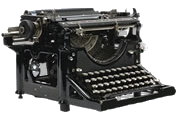The Iwo Jima Invasion
(Collier’s Magazine, 1945)
Written by war correspondent Walter Davenport some thirteen months prior to taking the helm as editor-in-chief at Collier’s Magazine, this article gives the reader a sense as to what D-plus-one looked like from the fifty yard line at the Battle of Iwo Jima (Operation Detachment: February 19 – March 26, 1945):
There is no Jap navy here to stop us; no Jap air force, either… So you see Jap? On our way up here to Iwo we flew over more supply ships, more cargo carriers. Those decks carry concrete mixers, Diesel-powered road crushers and rollers. There aren’t many cliffs on Iwo to hide out in, Jap! You can’t live for weeks in the crevices of Suribachi. You can’t grow gardens on that rock. So, while you can still see, look down at what we’re seeing: An American city, a harsh, womanless city is moving in on you.
Davenport’s observations were no doubt a comfort to the Collier’s readers on the home front, but post-war accounting revealed that one quarter of the U.S. Navy’s losses took place at Iwo Jima and Okinawa.
Click here to read a unique story about the Battle of the Sula Straits…
